09
2024-12
Kennedy Space Center viewing gantry gaining rocket engine test sim in 2025
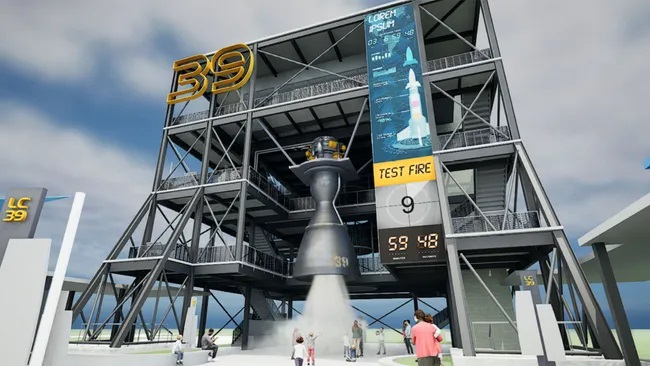
Artist rendering of The Gantry at LC-39, including its new "Test Fire Simulation" experience, as set to open to the public at the Kennedy Space Center Visitor Complex in Florida in early 2025. (Image credit: Kennedy Space Center Visitor Complex)
A countdown is underway at NASA's Florida spaceport, ticking down the days until the public can experience a rocket engine test closer than ever before — by standing directly under the engine's nozzle.
The Kennedy Space Center Visitor Complex has announced the upcoming opening of The Gantry at LC-39, a former launch pad viewing tower that has now been renovated to become an "innovative, interactive experience" that includes a simulated test fire of a rocket engine. The reimagined attraction is slated to debut in early 2025, returning as a regular stop on the visitor complex's bus tour of the NASA launch site.
"The Gantry at LC-39 is an exciting next step in our mission to inspire and educate the next generation of explorers," said Therrin Protze, chief operating officer at the Kennedy Space Center Visitor Complex, in a statement. "This new attraction brings the stories around NASA's research to monitor our planet and innovative interactives to offer a deeper connection to the space program through a unique and dramatic lens."
"This attraction will excite and educate all ages," said Protze.
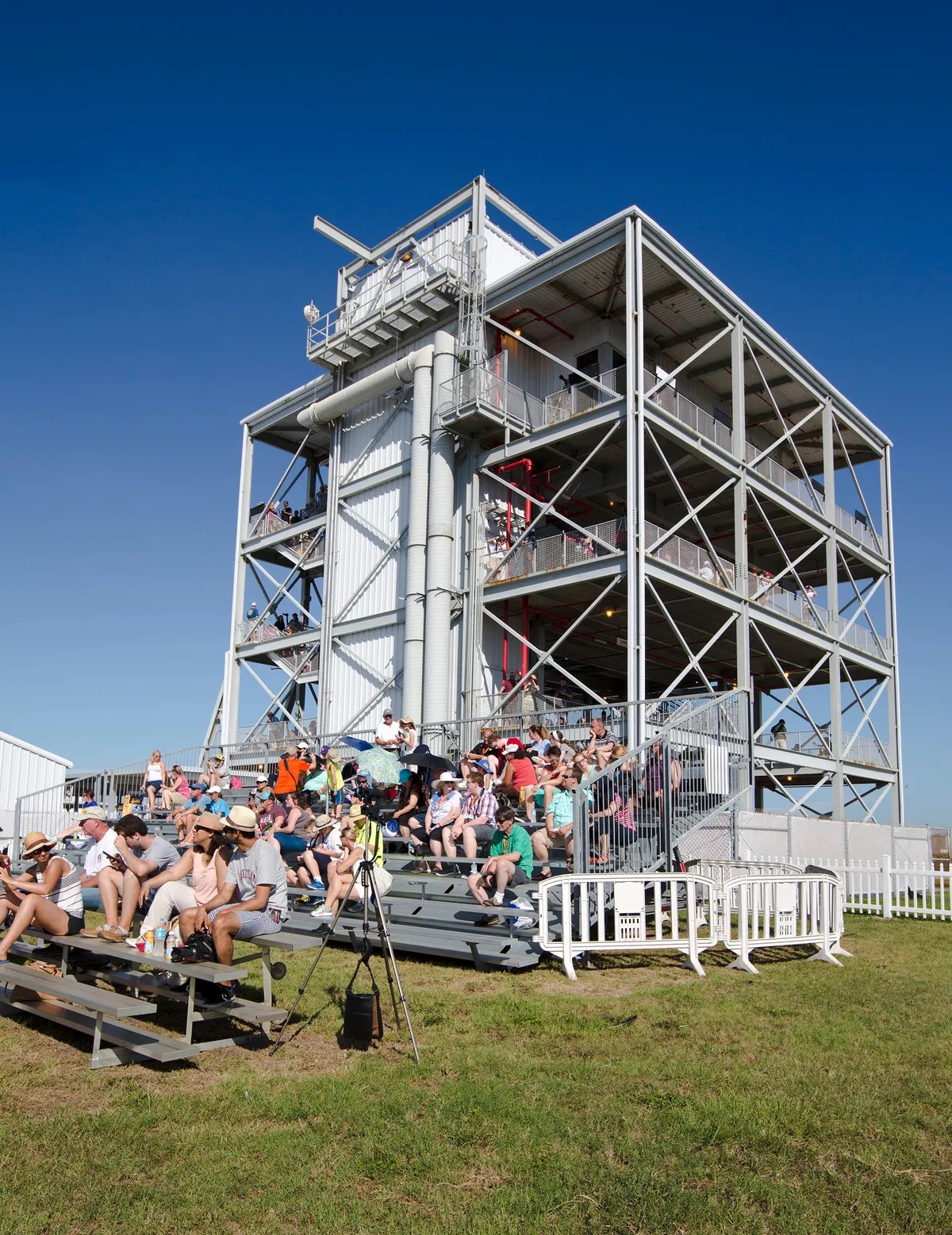
The Gantry at LC-39, seen here before its renovations, will continue to serve as a premium viewing location for guests coming to the Kennedy Space Center Visitor Complex to see rockets launch from the U.S. Space Force side of the Cape. (Image credit: Kennedy Space Center Visitor Complex)
Static firings are not an uncommon occurence at the Kennedy Space Center and neighboring Cape Canaveral Space Force Station. Typically, they take place before a launch to ensure that the rocket is ready to take flight. But just like during a liftoff, the public — and all those working the mission — need to be a good distance away to be safe from the deafening sound and powerful force of the test (to say nothing were something to go wrong, resulting in an explosion on the pad).
For the "Test Fire Simulation" at The Gantry at LC-39, guests can safely stand under a full-scale rocket engine as it roars to life. Sounds, light and a "cooling mist" stand in for the engine's exhaust while still delivering the "power and excitement of ignition," according to a description provided by the visitor complex.
The thunderous display, which is hosted by a fictionalized NASA engineer and their assistant, is just one of the new features awaiting guests at The Gantry. Visitors can also design and virtually launch their own rockets, as well as view exhibits dedicated to the NASA and Space Force launch pads visible from the tower's 360-degree platform.
The same view takes in Kennedy Space Center's location within a wildlife refuge. To that end, The Gantry at LC-39 was redesigned with the theme of "Off Earth, For Earth." The attraciton's new Earth Information Center (EIC) includes an immersive theater show, hyperwall display and exhibit gallery offering a "holistic view of how the planet is changing in ways that affect all life."
For young visitors, climbable sculptures of sea turtles, alligators and an eagle nest, as well as interpretive graphics, help tell the story of Kennedy Space Center's home in the Merritt Island National Wildlife Refuge. An artifact from a mobile launch platform is also on display.
As in previous years, The Gantry at LC-39 will continue to serve as a premium launch viewing site, where ticket-holding guests can get some of the closest views of launches taking off from the Space Force side of the Cape.
Rounding out the new features is a self-service, outdoor dining area adjacent to the river-rock-lined crawlerway that continues to be used to roll rockets out to the pad at LC-39B. Visitors can also view a large tread from a crawler-transporter used to carry out those moves.
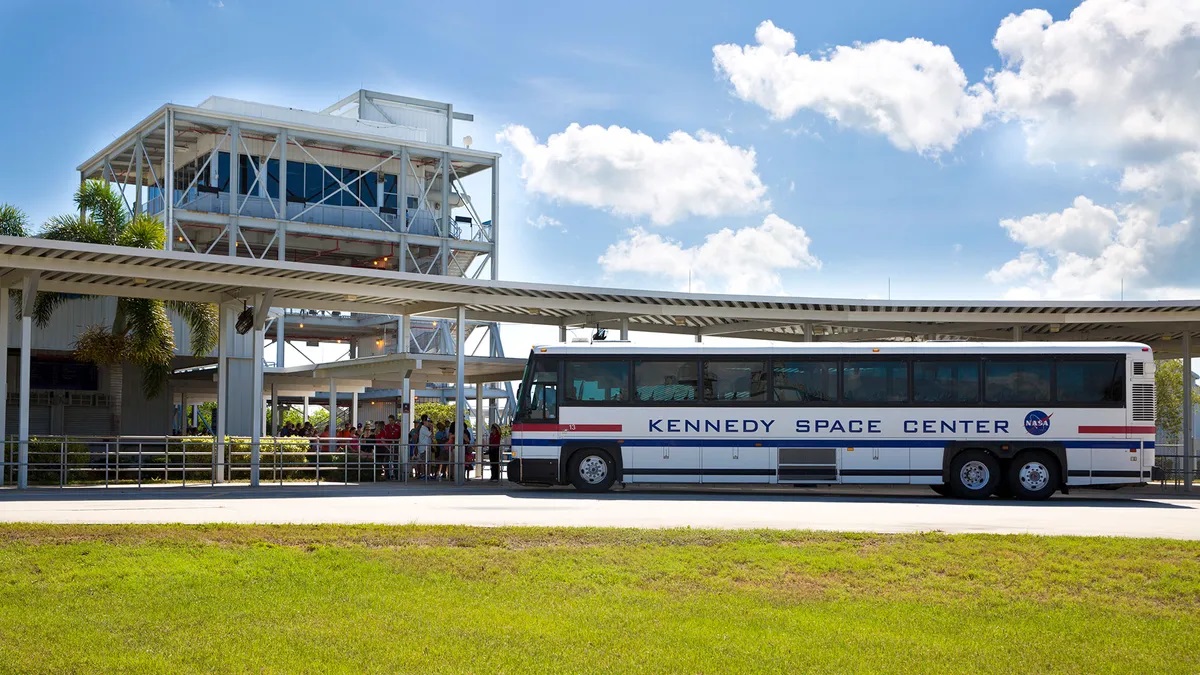
The Gantry at LC-39, seen here before its current renovations, is returning in 2025 as a regular stop on the Kennedy Space Center Visitor Complex's bus tour of NASA's Florida launch site. (Image credit: Kennedy Space Center Visitor Complex)
The Gantry at LC-39, which was previously known as the Launch Complex-39 Observation Gantry when it first opened in 1998, stands 60 feet (18 meters) tall and is located along the water's edge, adjacent to where the crawlerway divides to lead to either LC-39A or 39B. Prior to it being renovated, the tower suspended an authentic space shuttle main engine on static display, as well as hosted exhibits and a film devoted to the winged spacecraft, how it was prepared for launch, its thermal protection system tiles and the science it carried into orbit.
The Sept. 11, 2001 terrorist attacks temporarily closed the gantry to visitors as security was increased. Ten years later, after the International Space Station was completed and the space shuttle program ended, the observation gantry was removed from the general bus tour and, up until last year, remained open only to host private events.
-
29
2025-05

Tianwen-2 Mission Launched Successfully
At 1:31 AM today, China successfully launched the Tianwen-2 planetary exploration probe from the Xichang Satellite Launch Center using the Long March-3B Y110 carrier rocket.
-
13
2025-05
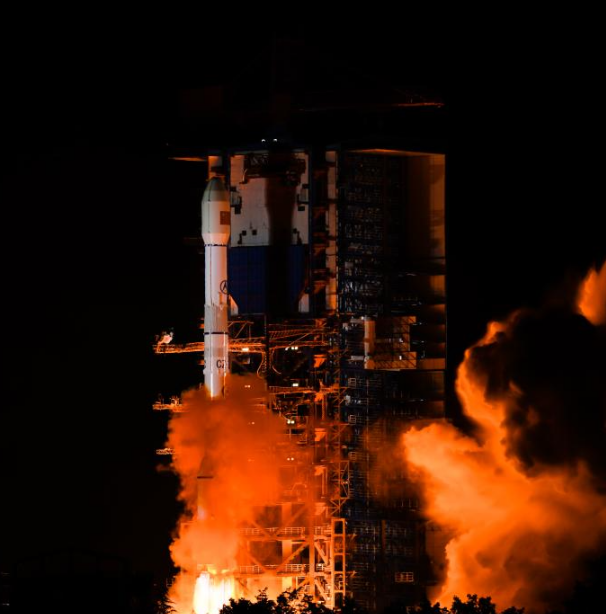
Communication Technology Experiment Satellite No. 19 Successfully Launched
At 2:09 on May 13, China successfully launched the Communication Technology Experiment Satellite No. 19 from the Xichang Satellite Launch Center using a Long March 3B carrier rocket. The satellite smoothly entered its predetermined orbit, and the launch mission was a complete success.
-
12
2025-05
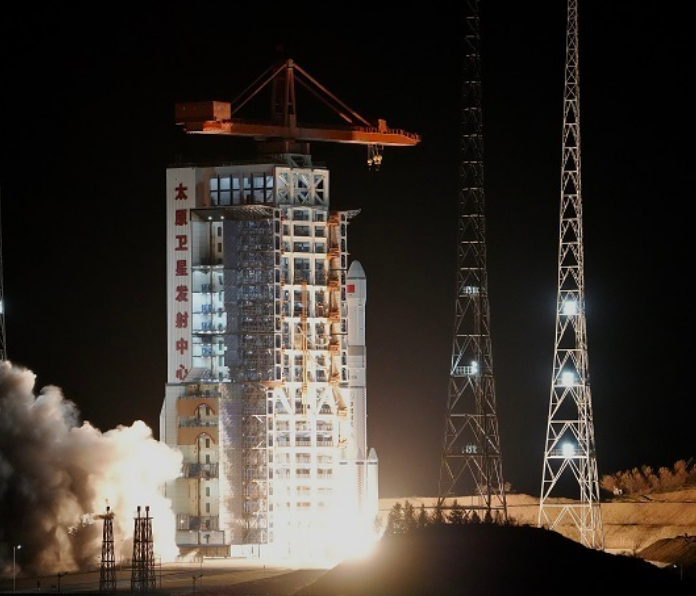
Remote Sensing Satellite No. 40, Group 02, Successfully Launched
On May 11 at 21:27, China successfully launched the Remote Sensing Satellite No. 40, Group 02, from the Taiyuan Satellite Launch Center using a Long March 6A carrier rocket. The satellite entered its predetermined orbit smoothly, and the launch mission was a complete success.









